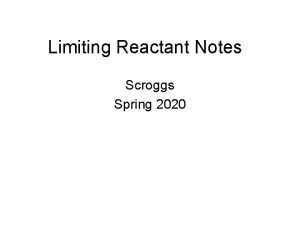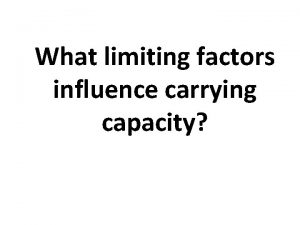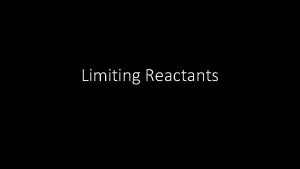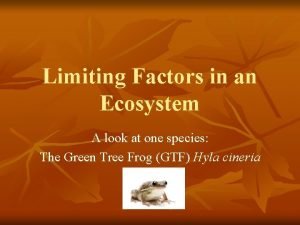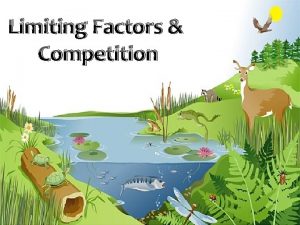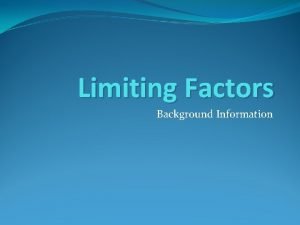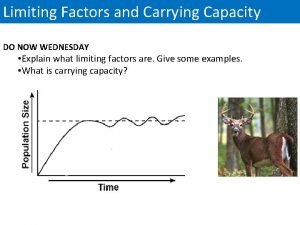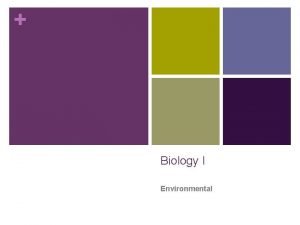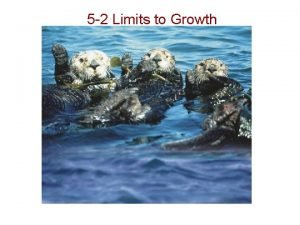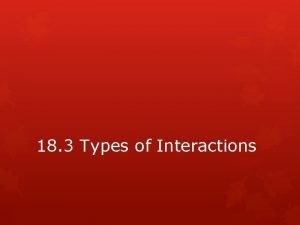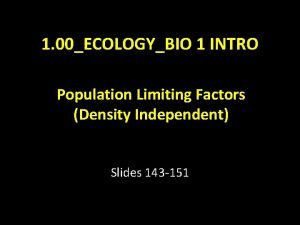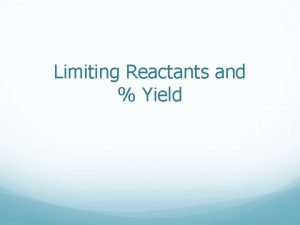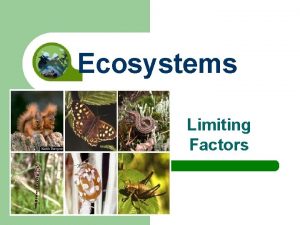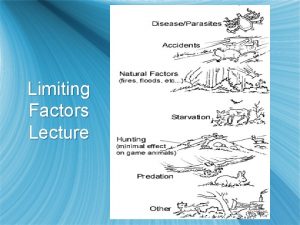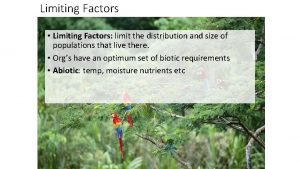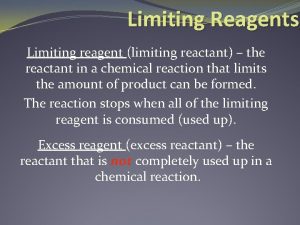Limiting Factors Chapter 10 2 n Limiting Factors












- Slides: 12

Limiting Factors Chapter 10. 2

n Limiting Factors n Is an environmental factor that causes a population to stop growing.

n Food and Water n All organisms need to take in nutrients if there is not enough for all members of the population the weak will die.

n Carrying Capacity n The largest population an area can support.

n Space n Each organism in a population needs to have enough space to live.

n Light n Sunlight is a limiting factor for plants.

n Soil Composition n Soil must contain the proper amount of nutrients in order for plants to get enough nutrients.

n Weather n Many organisms require a particular range of temperatures and amount of rainfall to live and reproduce.

Predator - Prey Interactions n. Reading Graphs: n. What variable is plotted on the xaxis? What two variables are plotted on the y-axis? n. Year; numbers of wolves and moose

Predator - Prey Interactions n. Interpreting Data: n. How did the moose population change between 1965 and 1972? What happened to the wolf population from 1973 through 1976? n. The moose population increased and then decreased; the wolf population increased.

n. Inferring: n. How might the change in the moose population have led to the change in the wolf population? n. As the moose population increased, more food was available to the wolf population and it increased.

n. Drawing Conclusions: n. What is one likely cause of the dip in the moose population between 1974 and 1981? n. The wolf population increased.
 Limiting reagent vs limiting reactant
Limiting reagent vs limiting reactant Carrying capacity examples
Carrying capacity examples Limiting reactant def
Limiting reactant def Limiting factors of photosynthesis graphs
Limiting factors of photosynthesis graphs What are limiting factors in an ecosystem
What are limiting factors in an ecosystem Which of these are limiting factors
Which of these are limiting factors Limiting factors
Limiting factors Limiting factors example
Limiting factors example Whats a density independent factor
Whats a density independent factor Limiting factors example
Limiting factors example 5-2 limits to growth
5-2 limits to growth Limiting factors types
Limiting factors types What is an example of a density independent limiting factor
What is an example of a density independent limiting factor
